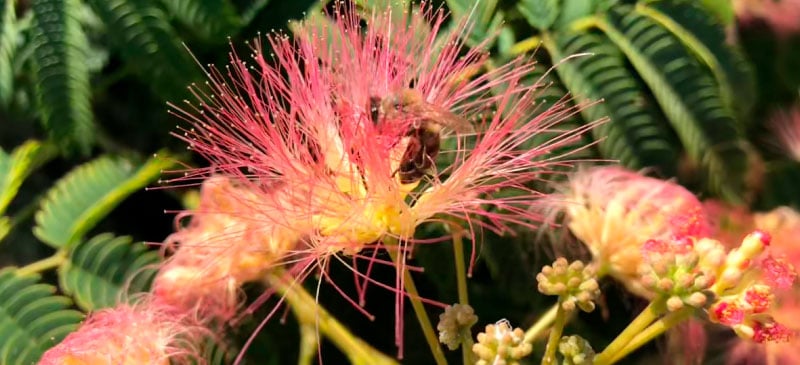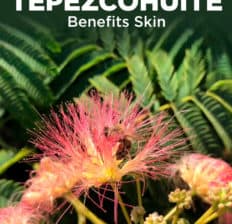This Dr. Axe content is medically reviewed or fact checked to ensure factually accurate information.
With strict editorial sourcing guidelines, we only link to academic research institutions, reputable media sites and, when research is available, medically peer-reviewed studies. Note that the numbers in parentheses (1, 2, etc.) are clickable links to these studies.
The information in our articles is NOT intended to replace a one-on-one relationship with a qualified health care professional and is not intended as medical advice.
This article is based on scientific evidence, written by experts and fact checked by our trained editorial staff. Note that the numbers in parentheses (1, 2, etc.) are clickable links to medically peer-reviewed studies.
Our team includes licensed nutritionists and dietitians, certified health education specialists, as well as certified strength and conditioning specialists, personal trainers and corrective exercise specialists. Our team aims to be not only thorough with its research, but also objective and unbiased.
The information in our articles is NOT intended to replace a one-on-one relationship with a qualified health care professional and is not intended as medical advice.
Tepezcohuite: A South American Tree Used for Skin Healing
August 22, 2022

We’re always looking for the next best natural skin care ingredient that will promote healthy aging and improve the appearance of our skin. It’s common to look to plants and trees used in traditional medicine, and tepezcohuite is a perfect example.
Traditionally used in Mexico and Brazil for its wound- and burn-healing properties, tepezcohuite is recently getting attention for its anti-aging and nourishing effects. Although there are barely any human trials on the ingredient, there are promising anecdotal reports that have people buzzing about tepezcohuite.
What Is Tepezcohuite?
Tepezcohuite (also called Mimosa tenuiflora and tepescohuite) is a perennial tree that’s used in traditional medicine to improve skin health, treat wounds and burns, and alleviate pain. It provides antioxidants, tannins and lipids with healing, moisturizing and anti-aging properties.
Tepezcohuite grows in Mexico and Brazil. It has been used for thousands of years, including by the Mayans, to treat burns. Back then, the bark of the tree was ground by hand into a powder and applied topically to the wound.
Potential Tepezcohuite Benefits for Skin
1. Supports Wound and Ulcer Healing
Tepezcohuite is known for its antibacterial properties, which allows it to support wound and ulcer healing. The tree’s bark has been used for this purpose for thousands of years, and there’s recent research to back it up.
A controlled clinical trial involving patients with venous leg ulcers (sores in the skin that can make months to heal) evaluated the efficacy of tepezcohuite for ulcer healing. The treatment group received an aseptic washing followed by topical application of a hydrogel containing M. tenuiflora extract, and the control group received the washing and a hydrogel with no plant extract.
After 13 weeks, ulcer healing was determined through measurement of the lesion area. In the treatment group, ulcer size was reduced by a mean value of 92 percent, and all patients in the group exhibited improvements. In the control group, only one patient displayed therapeutic effectiveness.
2. Alleviates Burns
Extracts from the bark of Mimosa tenuiflora are widely used for burn and wound healing in middle and South America. An in vitro study published in the Journal of Ethnopharmacology suggests that tepezcohuite extracts promote the reproduction of cells, which does speed up burn and wound healing.
3. Promotes Healthy Aging
Tepescohuite has antioxidant and anti-inflammatory properties, making it a useful tool for promoting healthy aging and improving the appearance and texture of your skin. It’s known to have soothing, nourishing effects, and it works as a natural moisturizer.
Although more research is needed to prove its efficacy, some people use M. tenuiflora to reduce the appearance of scars, too.
4. Helps With Pain Relief
A 2016 study published in PloS One found that Mimosa tenuiflora extract exhibited pain-relieving and anti-inflammatory effects. Researchers suggest that the extract has antinociceptive properties, meaning that it’s able to block the detection of a painful stimulus by the sensory neurons.
5. Has Antimicrobial Properties
Tepescohuite is used for wound, burn, lesion and ulcer healing because of its antimicrobial properties and ability to accelerate cell proliferation. An in vitro study indicated that M. tenuiflora extracts inhibited the growth of gram positive and gram negative organisms, yeasts and dermatophytes.
Risks and Side Effects
While the potential benefits of tepezcohuite are promising, more research is needed to fully understand the tree’s safety and proper usage. Most studies on its use were conducted in labs, and while there are anecdotal reports of the bark’s benefits and it’s been used traditionally for thousands of years, its potential risks and side effects are largely unknown.
Like any other new ingredient used topically, start with a small area of the skin when you first use tepezcohuite to rule out a sensitivity or adverse reaction. If you experience redness, burning, itching or any discomfort, discontinue use immediately.
There is not enough evidence to recommend using products containing tepezcohuite while pregnant or nursing.
Using the tree internally is not recommended. There are reports of its psychoactive and hallucinogenic effects when consumed.
How to Use
Face serums, creams and oils containing tepezcohuite powder or extracts are sold online and in some skin care or cosmetic stores. Make sure to purchase from a reputable brand, and follow the directions on the label carefully.
Before using any new product, do your research, and ask your dermatologist or health care professional for a recommendation.
Conclusion
- Tepezcohuite (also called Mimosa tenuiflora root bark and tepescohuite) is a perennial tree that’s used in traditional medicine to improve skin health, treat wounds and burns, and alleviate pain.
- It provides antioxidants, tannins and lipids with healing, moisturizing and anti-aging properties.
- While human evidence is limited, there are anecdotal and lab reports on the bark’s benefits and uses. However, safety is a concern, and more research is needed to make clear recommendations on using the tree extract topically.
- Before using a product containing this ingredient, do a patch test on a small surface area, and avoid using if pregnant or breastfeeding.
Comments
Please keep comments under 200 characters.





Where can I find this product with a reputable company?
Is this product unscented?
The information regarding the lack testing, adverse and/or unknown risks & medical doctor recommendations provide multiple strong reasons eliminate all products containing tepezochipe from skin care,
I use the brand
Trepezcohuite
It is in a brown jar. And their serum
Look online and it’s not that pricey
I love it and see the benefits after only a couple of weeks so I figured it can only get better after more time
Can u go into more details about benefits ? Have u tried the soap . Also some eyedrops have that tepezcohuite ; kind of leery about trying the eye drops .
I use the actual bark and grind it and add boiling water <3
Great article! I need to point out that pictured is Albizia Julibrissin, not Mimosa Tenuiflora/Hostilis (Tepezcohuite) 99% of websites get it wrong.
Where can I buy the real pure Tepezcohuite drops for burns on the skin?
Check out Evergreen Herbs in Milwaukee, WI. I purchase my Tepezcohuite Powder from them. Great quality and good price.
Harry if u find it please let us know ? Under the impression the bark is dark , like color of beets ; that’s why it’s mixed w. cream . But say does work excellently on burns .
I didn’t know how good this sop and cream of tepezcuintle is until I started using on my face .
I have dealing with very dark spots on my face for 26 years trying deference kind of creams and dermatologist
I am using this product for two weeks and my skin is getting better thanks to whoever discover this treatment
Hi! Could you please share the name of the cream you are using? I have dark spots on my face for years and nothing has worked!
No answer ? At least try the brand called Del Indio Papago tepezcohuite night skin cream
and soap … that’s what I’ll probably buy .
Please share with us the products that you used. Thanks
I thought your research on this plant was found useful. I live here in El Paso Texas and here they sell it as a powder to mix in with your hair conditioner. They also sell it as a liquified shampoo- to help your hair grow. Have you researched on this yet. Would like some feedback on this. Thank you.
Monica can you please tell us the name of the company selling the powder ? Is it a pinkish color ?
Great product I’ve used it for over 15 yrs.
Where do you purchase it from?
amazon
When you say great product , can’t you please go into some more details for those of us who really want to know more about the product and what that really means ?